
Mantidae is one of the largest families in the order of praying mantises, based on the type species Mantis religiosa; however, most genera are tropical or subtropical. Historically, this was the only family in the order, and many references still use the term "mantid" to refer to any mantis. Technically, however, "mantid" refers only to members of the family Mantidae, and not the 14 remaining families of mantises. Some of the most recent classifications have promoted a number of the mantid subfamilies to the rank of family, e.g. Iridopterygidae, Sibyllidae, Tarachodidae, Thespidae, and Toxoderidae, while other classifications have reduced the number of subfamilies without elevating them to higher rank.

Tenodera is a genus of mantis in the family Mantidae which contains several species of praying mantises. The species in this genus can be found primarily in Africa, Asia and Australia, but also North America.

Hymenopodinae is a subfamily of the mantis family Hymenopodidae that includes several species of flower mantises.
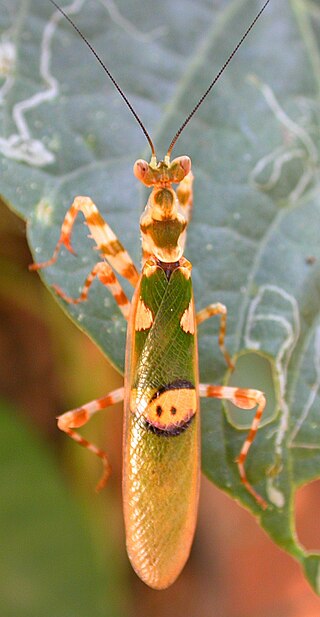
Creobroter is a genus of flower mantises in the tribe Hymenopodini; species are concentrated in Asia. The name comes from the Greek kreo-, meaning "flesh") and broter" meaning "eating", therefore, "flesh-eating", an apt name for a predatory insect. Both sexes have long wings and are capable fliers. Full-grown males are about 3 to 4 cm in length; females are about 4 to 5 cm.

Acromantinae is a subfamily of the mantis family Hymenopodidae which contains two tribes and about 13 genera.

Rhombodera is a genus of praying mantises native to Asia and possessing common names such as shield mantis, hood mantis, and leaf mantis because of their extended, leaf-like thoraxes.

Acanthops is a genus of mantises in the family Acanthopidae, containing 20 species that can be found in Central and South America.
Oxypiloidea is a genus of praying mantis in the family Hymenopodidae. 25 species are accepted within two subgenera:
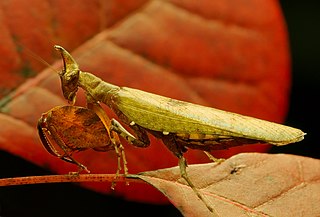
Hestiasula is a genus of Asian praying mantids in the subfamily Oxypilinae of the family Hymenopodidae.
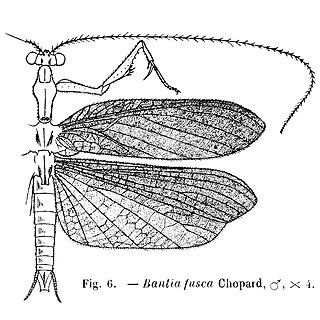
Thespidae is a family of insects in the order Mantodea. Following a major revision of this order in 2019, the old-world subfamilies Haaniinae and Hoplocoryphinae, previously placed here, have been upgraded to family level. Thespidae are mostly Neotropical and few species have reached the Nearctic realm.
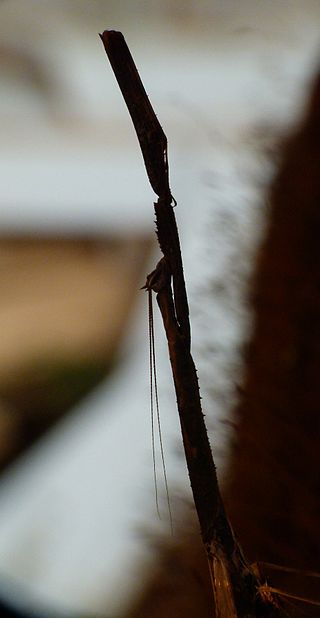
Toxoderidae is a family of praying mantises.
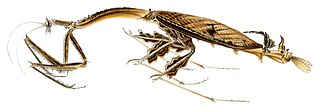
Toxodera is the type genus of mantises in the family Toxoderidae, known for their stick mimicry. There are four confirmed species in Borneo restricted to old-growth forests, and are considered to be rare. Species of the South-East Asian Toxoderini inhabit beneath the forest canopy. Not much is known regarding their ecology. Males however, are often attracted to lights. One species, Toxodera maxima, can reach 18 cm in total length.
Deroplatyini is a tribe of the subfamily Deroplatyinae of the family Mantidae of Mantodea.
Oligonyx is a genus of mantises in the family Thespidae.
Fulcinia is a genus of praying mantises found in Australia. It is the type genus of the subfamily Fulciniinae and tribe Fulciniini.
Thespinae is a subfamily of mantises in the family Thespidae. There are 16 genera and at least 40 described species: found in most continents.

The Hierodulinae are a subfamily of praying mantids, originally used by Brunner von Wattenwyl. It was restored as part of a major revision of mantid taxonomy, and now contains genera previously placed elsewhere in the family Mantidae.
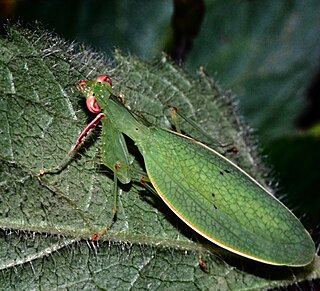
The Nanomantidae are a new (2019) family of praying mantises, based on the type genus Nanomantis. As part of a major revision of mantid taxonomy, genera and tribes have been moved here, substantially replacing the old family Iridopterygidae.
Hapalomantis is a genus of mantises belonging to the family Nanomantidae.













